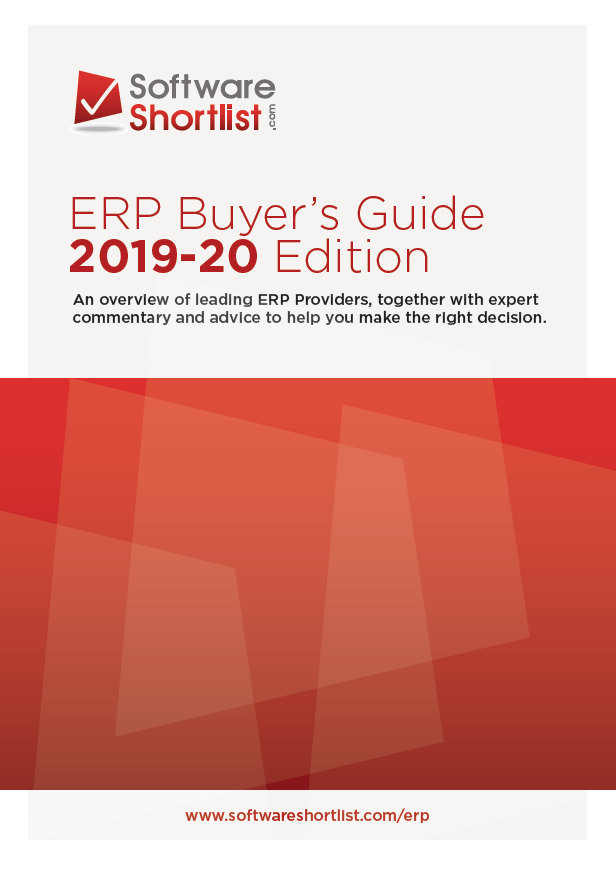If you are thinking about upgrading your ERP or any other business system and wondering how to set a budget for the project, this article is aimed at you. There is no simple calculation or price list you can use to accurately establish what a full system change would cost, nor should you be tempted to phone a few suppliers before doing some homework first.
Here are a few steps you can take to help you get a better idea:
Step 1: Realise the elements of the overall cost
Reseller/ Vendor Costs
Initial Software Costs: Most suppliers will charge you an ‘Initial License Cost’ for the software. This is a one off cost you pay to buy the software. It makes up anything between 30-60% of the overall solution cost, depending on the complexity of your requirements.
Over time the ERP market has matured to a point where most systems are comparable, within a 15-25% range. If a cost falls outside of this broad range, then the software is likely focused on a different segment of the market.
Annual Software Maintenance: Software development companies charge a yearly fee for the use of their software. This fee enables users to update the software to the latest version for bug fixes and enhancements. This fee can either be an actual contracted amount to use the software or an optional costs to obtain the upgrades. If it falls under a license agreement then you would have to remove the software from your systems if you stop paying.
Telephone Support: The reseller you buy the system from might charge an additional annual fee for telephone support. This could come in the form of a fixed fee for unlimited support per annum, or a support pack arrangement where you buy a set amount of support hours.
Implementation services from Reseller: The services required to implement the system can be the biggest cost. It is usually quoted as X number of hours and split between Project Management, Installation, Design, Training, Report Writing etc. It is not an easy cost to estimate and can fluctuate depending on your internal resource availability and capability.
Development Costs: If your requirements fall outside of the software capabilities then a Reseller could provide development services to alter it. This is typically charged on a per hour or day basis and a specification will be drawn up to get a firm cost.
The developer will likely charge an annual fee to maintain the custom software which is separate to the annual license fee listed above.
Internal Costs
A critical cost which is mostly overlooked is the internal cost of time & resource to make the system implementation a success. Many companies attempt to implement a system by getting staff to spend a little time on the project, now and again, resulting in varying degrees of failure.
Many system implementations simply end up as old replacing the old, because the shortest route to go-live is selected. No real improvement is gained as a result of the new system because the company did not take the opportunity to improve processes, due to lack of internal resources.
Internal costs should include:
- Backfilling staff members so they can manage the project
- Slowing down the project so staff can handle the extra workload
- Employing independent consultants to assist with the process
- Purchasing more time from the Reseller
If you are planning to change your systems, and you don’t consider the internal resource cost to the business, you could end up spending a lot of money but not really gaining any benefit for it.
Step 2: Call on expert advice from other businesses and independent specialists.
Now that you have an idea of the costs involved in changing a system, you should call some independent experts. They can be companies similar to yours who have changed systems in the past, independent consultants who operate in the ERP market or system consultants you have been recommended. Asking about their experiences will give you a more accurate estimate than phoning a ERP sales person.
It’s also a great idea to set some parameters in stone so you can compare apples with apples. For example, decide on the number of users of the system and which modules you are likely to need. This way you can easily compare the software cost element of the overall solution.
The common perception of IT system projects is that they go over budget, and my time as an independent consultant has given me some insight as to why this happens. If companies are not aware of all the cost elements, they don’t budget for them! So as the project progresses and the need for internal resources arise, additional costs are incurred which have not been budgeted for. Getting good advice before you set your budget will limit the risk of exceeding it.
About the Author
Endeavour Solutions
Australia – www.endeavouraust.com.au
New Zealand – www.endeavour.co.nz



